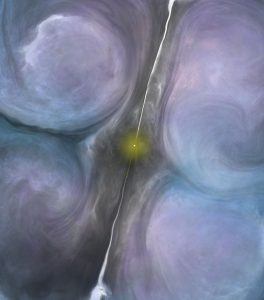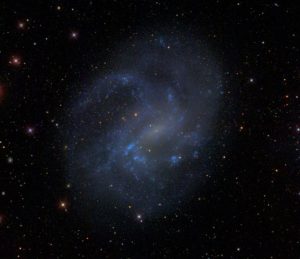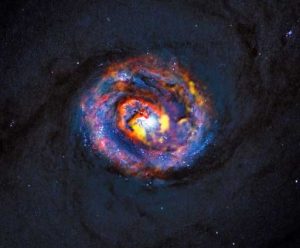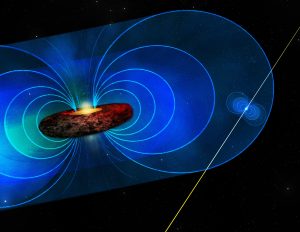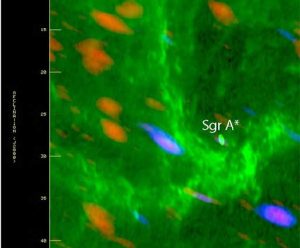ALMA finds pockets of complex organic molecules around supermassive black hole.
‘Perfect Storm’ Quenching Star Formation around a Supermassive Black Hole
Turbulence from a black hole in a nearby lenticular galaxy is squelching star formation.
Dwarf Galaxies Give Clues to Origin of Supermassive Black Holes
Astronomers have found more than 100 small, dwarf galaxies with characteristics indicating that they harbor massive black holes feeding on surrounding gas.
ALMA Observes Two Supermassive Black Holes
Two teams of researchers using the ALMA telescope have made remarkably detailed observations of supermassive black holes caught in the act of ingesting matter and converting it into powerful jets of particles and energy.
Newly Found Pulsar Helps Astronomers Explore Milky Way’s Mysterious Core
Astronomers have made an important measurement of the magnetic field emanating from a swirling disk of material surrounding the black hole at the center of our Milky Way Galaxy.
ALMA Sees Stars Forming Near Galaxy Core
Astronomers using the Atacama Large Millimeter/submillimeter Array have discovered signs of star formation perilously close to the supermassive black hole at the center of the Milky Way Galaxy.







